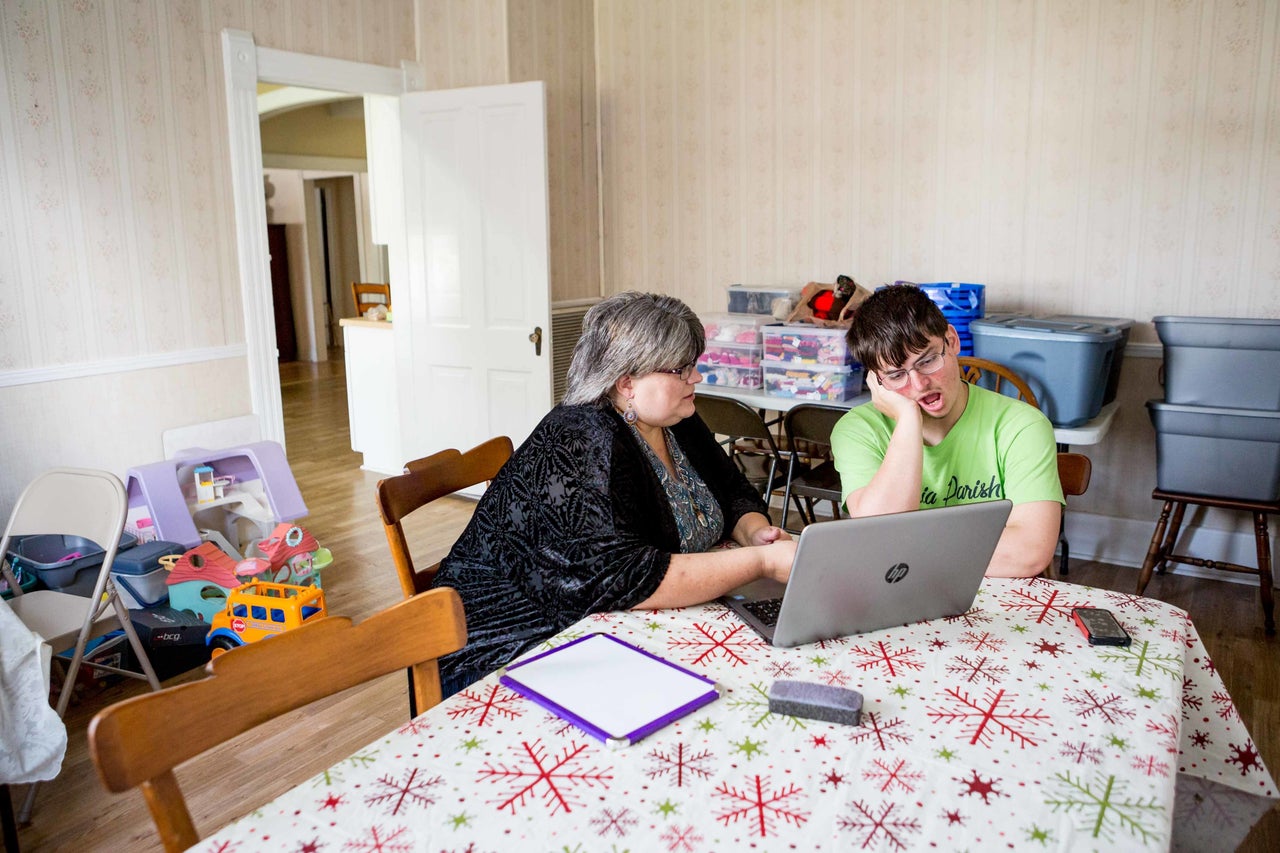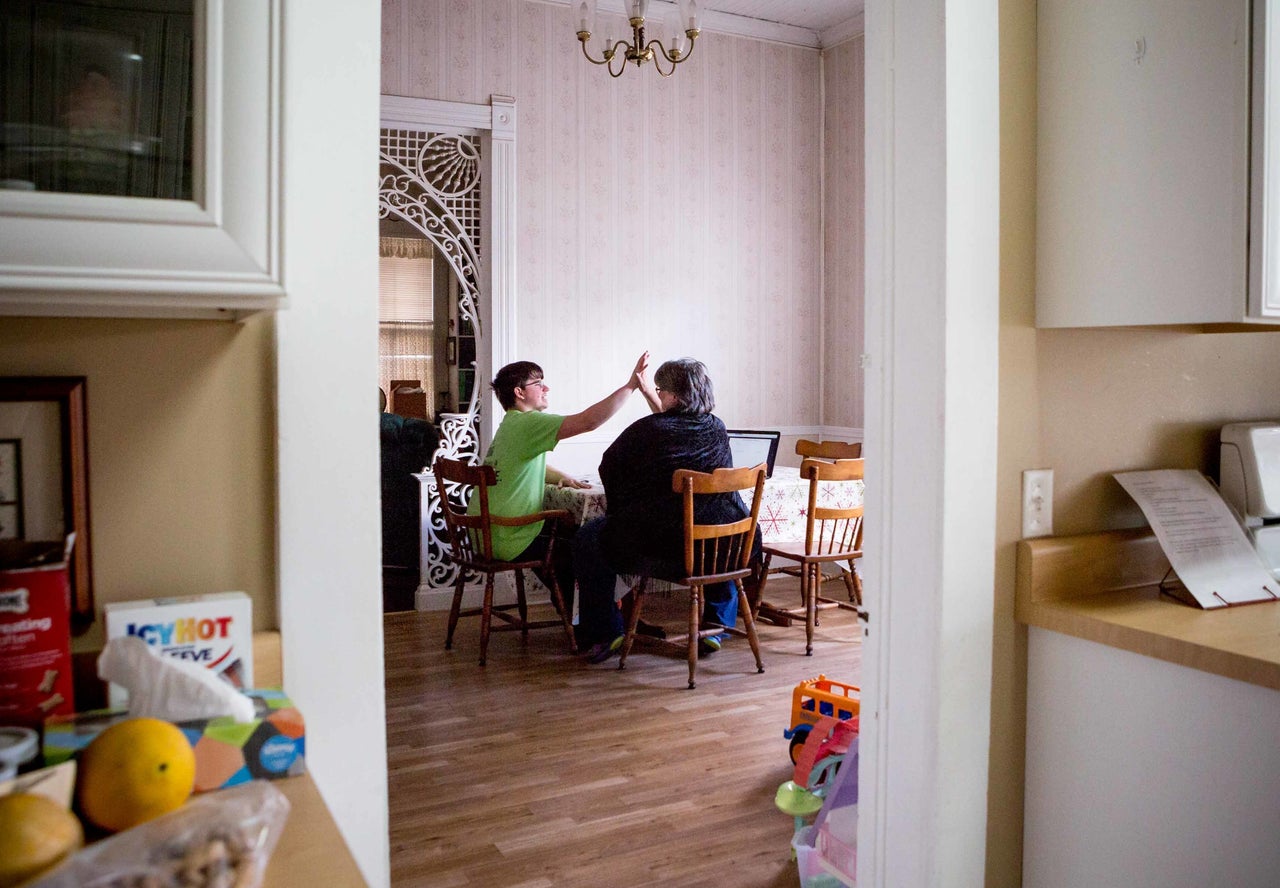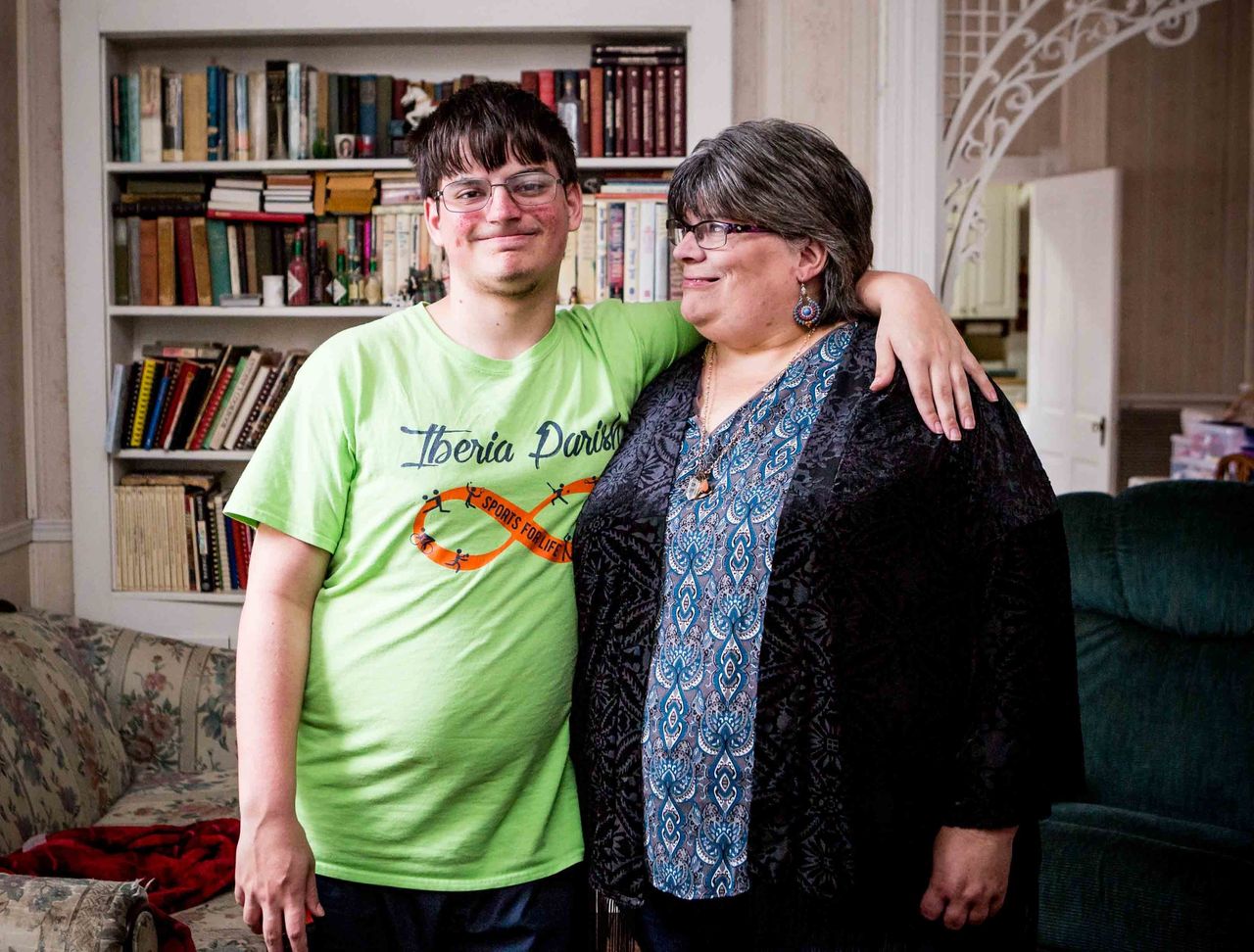Julie Comeaux’s 17-year-old son, Matthew, is a student with special needs. He has tuberous sclerosis, epilepsy and autism, but that hasn’t stopped him from being ambitious at school. He has worked hard to keep up with his peers despite his difficulties.
So when administrators at Matthew’s Louisiana high school suggested last year that he forgo getting a regular high school diploma and start working on a watered-down alternative diploma, Julie Comeaux was appalled.
The alternative diploma, attained through the LEAP Alternate Assessment, Level 1 (LAA1) graduation pathway, allows students with severe disabilities to forgo typical academic expectations and requirements, and it doesn’t end with the high school diploma.
It’s like school administrators wanted Matthew to “either sink to the level of getting a LAA1 diploma or swim with the big fish and fail,” said Comeaux, who lives in New Iberia, a small city near Lafayette. “My favorite comparison I see a lot is about asking a fish to climb a tree. I’m not asking Matthew to climb a tree. I’m asking him to swim a river, though it might be upstream.”
As of 2016, Louisiana and 23 other states had alternative diploma or certificate options specifically for students with disabilities, each state with its own system. On its face, this process seems to make sense. It gives students with special needs another option for coursework if they have trouble keeping up with the typical requirements.
In practice, this process is more complicated and sometimes relegates capable students into diluted settings, stunting their ability to not only learn in school but also to achieve later in life.
The stakes for these students are high. Diplomas, specifically for students with disabilities, usually fall short of what is required for college entrance. Employers often require a standard diploma for jobs. Even worse, not all parents are aware of these pitfalls when they agree to place their student on an alternative graduation track, causing them to unwittingly set their child up for years of low expectations.
However, there is not much research on the life outcomes of students with disabilities who attain high school diplomas versus those who get alternative exit documents.
An alternative diploma or certificate track might work for many students, especially students with specific academic needs who have severe cognitive disabilities. It would not work for Matthew, Comeaux suspected. Her suspicion was confirmed when she eventually obtained sample LAA1 curricula from school leaders and saw that they would be remedial for Matthew.

Comeaux, who has made it a point to educate herself about the intricacies of special education policy, told administrators she would not be taking her child off the regular diploma track.
But most parents do not have the expertise to make such a decision.
When parents and kids hear the word “certificate,” “to them that means it’s a document that is similar to a regular diploma and has the same value. And that’s not the case,” said Candace Cortiella, the director of The Advocacy Institute, a nonprofit based in Washington, D.C., that works on behalf of people with disabilities. “A lot of times kids don’t find that out until way too late.”
Throughout his time in school, Comeaux always felt that Matthew might be overlooked if she didn’t stay vigilant on his behalf. Her fear is well-founded. Although an estimated 90 percent of students with disabilities should be able to meet the same graduation standards as their peers, the national graduation percentage for students with disabilities lingers in the mid-60s.
The accuracy of these numbers, though, is fuzzy. States have been known to calculate these rates in disparate ways. States sometimes count students with disabilities who receive a regular diploma through alternative requirements, and sometimes they do not. It is unclear how many students with disabilities leave high school with an exit document other than a regular diploma, according to Martha Thurlow, the director of the National Center on Educational Outcomes at the University of Minnesota, a group that researches students with disabilities.
“There’s no way of monitoring how often kids are tracked inappropriately,” Thurlow said.
“We don’t even know how often kids are tracked, period.”
Louisiana, where Matthew has always attended school, has its own specific challenges. The state has one of the lowest graduation rates for students with disabilities in the country and one of the largest gaps in graduation rates between students with disabilities and other students. As recently as 2011, more students with disabilities in Louisiana dropped out than graduated.
Future improvement is unclear. The Every Student Succeeds Act ― a federal education law passed in 2015 ― allows states to create a state-defined alternative diploma that’s aligned with regular requirements.
Comeaux conceded that administrators’ concerns about Matthew did not arise in a vacuum. Matthew’s condition is intense. Tuberous sclerosis causes non-cancerous tumors to develop in the brain. A few years ago, he also started having stress-induced seizures, causing him to miss large chunks of middle school, putting him at a disadvantage for his freshman year. He is also autistic and has some cognitive delay, Comeaux said.
While Matthew is outgoing ― he has memorized the schedules of his favorite cashiers at the grocery store and loves to visit them ― he had a poor experience with school staff in middle school, and in high school he became increasingly anxious and prone to outbursts. The low score on a psychiatrist-conducted evaluation of his behavior meant he “qualified” for the LAA1 path.
But Comeaux felt that none of these issues precluded her son from achieving in an academically rigorous environment.
They “didn’t bring up his ability to do the work,” Comeaux said of that January 2016 meeting. “He’s not a child we’re teaching to push a broom.”

Comeaux eventually decided to pull Matthew out of New Iberia Senior High School and try home-schooling. Matthew’s behavior, happiness and academics have all improved. He will eventually graduate with a regular diploma, and Comeaux hopes to see him go on to attend a two-year college.
District officials did not respond to requests for comment on Matthew’s experience.
Still, Comeaux wishes there had been a middle ground to address the challenges Matthew was facing. In this ideal world, Matthew would be able to stay in school and graduate with a regular diploma but advance through the curriculum at a slower pace than his peers.
The desire for more ― or at least better ― options is one that parents of children with disabilities understand well.
Gena Mitchell’s 15-year-old daughter, Devin, is on the certificate track at school in Maryland. She placed her daughter, who has Down syndrome, on this track during the sixth grade. She’s just now beginning to realize what this decision might mean for Devin’s future.
Devin spends her days in an inclusive, general education environment but receives modified work. It’s a system that has generally worked well for Devin. She takes pride in showing improvement on assignments while thriving socially with her peers.
But this year, once assignments started counting for college, Devin stopped receiving grades on her report card. The document simply says, “No grade.”
Mitchell always assumed that Devin would go on to college. She’s just realizing how this lack of grades could affect these plans.
“That’s my next step: to look and see, what does this mean for her in the long term? What does this mean for what is possible for her?” Mitchell said.
Mitchell knows her daughter would never be able to follow the same curriculum as her peers. But she also knows that her daughter has achieved strong gains and works hard. Her daughter takes classes including Spanish and astronomy. She can read the same books as her peers ― even if they’re in a modified format. That has to be worth something.
“It was the best information I had,” Mitchell said of putting her daughter on the certificate track. “If I lived in other parts of the country, my daughter could graduate with a diploma with modified work.”
Indeed, for students with disabilities, different areas of the country can have vastly different expectations.
“There are states holding students with disabilities to just about the same graduation requirements as their non-disabled peers, and then there are other states allowing all kinds of funny business in the name of trying to be accommodating,” Cortiella said. “We have kids leaving high school with diplomas they think are worth something, and in many cases they actually aren’t.”
But in the world of special education, more options don’t always mean better options. There are limited data on the issue. It is unclear whether states with only one diploma track produce more successful students with disabilities. There is a dearth of research on the topic.
“Does a state with only one diploma mean people work harder to make sure [students with disabilities] get that diploma rather than saying, ‘Oh well, we can get them a certificate’? I just don’t think we have good data,” Thurlow said.
This story was produced by The Hechinger Report, a nonprofit, independent news organization focused on inequality and innovation in education, in partnership with HuffPost. Read the whole series, “Willing, Able and Forgotten: How High Schools Fail Special Ed Students,” here. Sign up for our newsletter.
CORRECTION: An earlier version of this story misspelled Matthew’s condition. It is tuberous sclerosis.
